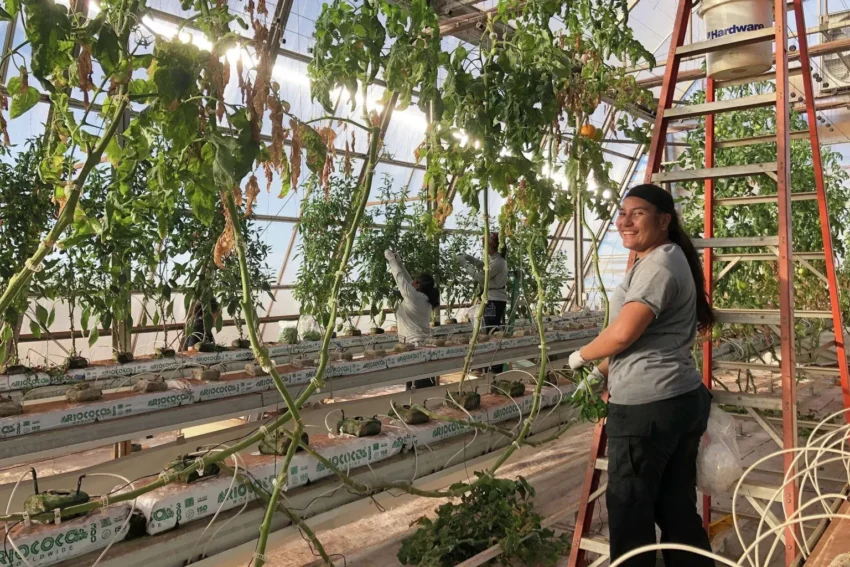Larry Ellison’s ambitious venture into agriculture through Sensei Farms highlights a crucial lesson in business: expertise in one domain does not guarantee success in another. Initially acquiring Lāna‘i Island in Hawaii for $300 million, Ellison envisioned a high-tech farming operation leveraging AI and robotics to revolutionize food production. However, after eight years and an investment of $500 million, Sensei Farms has faced significant hurdles, from technological failures to fundamental miscalculations in agricultural practices. As we delve into the complexities of this endeavor, we uncover the challenges of applying innovation in an industry governed by its own unique set of rules and environmental realities.
| Attribute | Details |
|---|---|
| Founder | Larry Ellison, co-founder of Oracle |
| Company Name | Sensei Farms |
| Location | Lāna‘i Island, Hawaii |
| Acquisition Cost | $300 million in 2012 |
| Investment So Far | $500 million over 8 years |
| Initial Vision | AI-powered greenhouses and robotic harvesters |
| Current Status | Struggling with technological issues and rookie errors |
| Key Challenges | Wi-Fi problems, unsuitable greenhouse designs, pest issues |
| Management | Co-founded by a medical doctor, managed by a tech executive from Boston |
| Products Available | Lettuce and cherry tomatoes sold in local markets |
| Ongoing Issues | Delays, leadership changes, costly renovations |
| Lessons Learned | Funding alone cannot ensure success; industry experience is vital |
Larry Ellison’s Vision for Sustainable Farming
Larry Ellison, known for co-founding Oracle, has always been a visionary. In 2012, he decided to invest in agriculture by buying Lāna‘i Island for $300 million. His dream was to create a farm powered by advanced technology, like AI and robots, to grow food sustainably. This idea was not just about growing crops; it was about changing how food is produced to help feed the world in a better way.
However, turning this dream into reality has proven challenging. After spending $500 million over eight years, Ellison’s Sensei Farms is still facing difficulties. The company intended to use innovative methods to improve farming, but they encountered many obstacles, such as technical issues and the wrong type of greenhouse designs for Hawaii’s humid climate. These challenges show that even great ideas need to be carefully planned and executed.
Challenges Faced by Sensei Farms
Every new project comes with its own set of challenges, and Sensei Farms is no exception. One major problem has been technological glitches, such as weak Wi-Fi and solar panels damaged by strong winds. These issues can seriously affect how well the farm operates and how effectively it produces food. If the technology isn’t working properly, it makes it much harder to achieve the farm’s goals.
Another challenge was the design of the greenhouses. They were built to withstand the dry heat of desert areas, which does not fit the humid conditions of Lāna‘i. This mistake led to further complications, such as creating a perfect environment for pests that could harm the plants. These challenges highlight the importance of understanding the local environment when starting a new agricultural venture.
Mistakes and Learning Opportunities
Mistakes are often the best teachers, and Sensei Farms has had its share of them. For example, combining mature and young plants in the same space created problems because it attracted pests. This error shows the importance of studying how different plants interact with each other. Learning from these mistakes is crucial for improving future farming methods and ensuring better crop yields.
Another costly mistake was the renovation of cannabis grow houses that were not initially successful. This situation emphasizes that even with a lot of money invested, it’s essential to have the right knowledge and experience in the agricultural field. Each setback provides valuable lessons that can help improve operations and lead to better decision-making in the future.
A Mix of Successes and Struggles
Despite the challenges, Sensei Farms has had some successes. They’ve managed to grow lettuce and cherry tomatoes, which are now sold in a few local markets and restaurants on Lāna‘i. These small wins are important as they prove that the farm can produce food, even if it’s not at the scale Ellison originally envisioned. Celebrating these achievements helps keep the team motivated.
However, the ongoing struggles, such as leadership changes and delays in production, remind us that success in one area doesn’t guarantee success in another. Running a farm is very different from running a tech company, and these differences can lead to complications. It’s important for the team to adapt and learn from their experiences to continue making progress.
The Importance of Local Expertise
One key takeaway from Sensei Farms’ experience is the importance of having local expertise. The company is managed by a tech executive from Boston, which may not provide the best understanding of Hawaii’s unique agricultural environment. Having team members who know the local climate and growing conditions can significantly improve decision-making and increase the chances of success.
Local experts can also help identify the right plants to grow and the best farming methods to use. Their knowledge can prevent costly mistakes, such as choosing the wrong greenhouse design or failing to account for local pests. By working with people who understand the area, Sensei Farms can enhance its operations and create a more sustainable farming model.
Funding vs. Knowledge: The Real Difference
Sensei Farms demonstrates that having a lot of money doesn’t automatically lead to success. Even with $500 million invested, the project has struggled to meet its goals. This situation reminds us that knowledge and experience are just as important as financial resources. Without the right expertise in agriculture, even the best-funded projects can face significant hurdles.
Investing in learning and understanding the agricultural industry is crucial for long-term success. It’s not enough to throw money at a problem; teams must also invest time in research and development. This balance between funding and knowledge is essential for creating sustainable solutions that can truly benefit the farming industry.
Frequently Asked Questions
What does Larry Ellison aim to achieve with Sensei Farms?
Larry Ellison aims to transform farming on Lāna‘i Island using AI and technology to create sustainable agriculture that can feed the world.
Why has Sensei Farms faced challenges?
Sensei Farms has encountered issues like technological glitches, unsuitable greenhouse designs, and pest problems, which hinder its progress despite significant investment.
What are some products from Sensei Farms?
Sensei Farms produces lettuce and cherry tomatoes, which are available in local markets and restaurants on Lāna‘i Island.
How much did Larry Ellison invest in Sensei Farms?
Larry Ellison invested approximately $500 million into Sensei Farms over eight years to develop the agricultural project.
What mistakes did Sensei Farms make with its greenhouses?
Sensei Farms built greenhouses meant for Israel’s desert climate instead of adapting them for Lāna‘i’s humid conditions, causing significant issues.
Who manages Sensei Farms now?
Sensei Farms is currently managed by a tech executive from Boston, despite being co-founded by a medical doctor.
What lesson can be learned from Sensei Farms’ experience?
The experience of Sensei Farms shows that expertise in one field does not guarantee success in another, highlighting the importance of industry-specific knowledge.
Summary
Larry Ellison’s company, Sensei Farms, highlights that expertise in one area doesn’t ensure success in another. Despite investing $500 million to revolutionize farming on Lāna‘i Island, Hawaii, the initiative faces many challenges. Ellison aimed to use advanced technology like AI and robotics to create sustainable farming. However, they have struggled with technical issues, such as Wi-Fi failures and unsuitable greenhouse designs for the local climate. While some produce like lettuce and cherry tomatoes are sold locally, ongoing delays and costly mistakes show that even with vast resources, understanding the farming industry is crucial for success.






